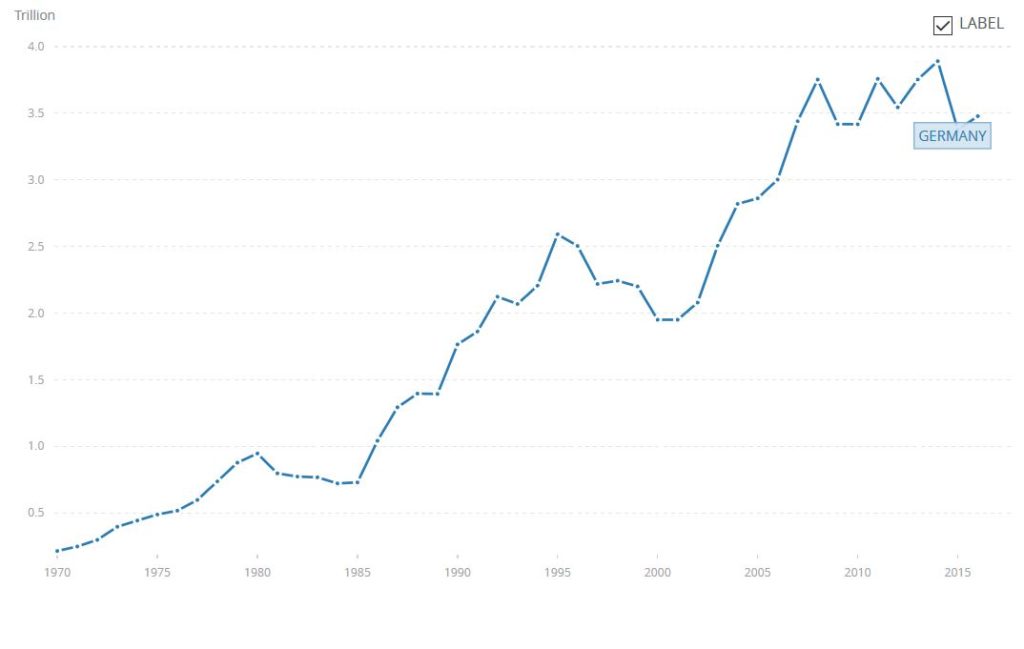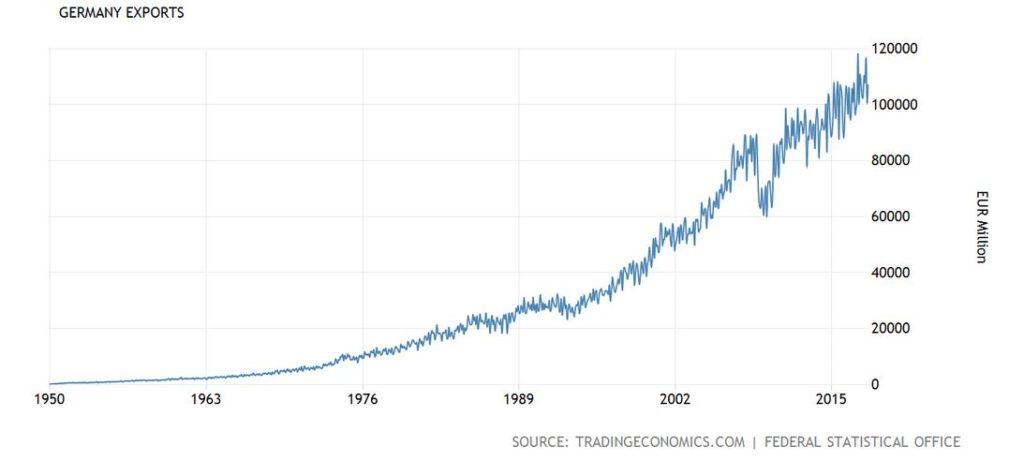Germany
Germany stands as the largest economy in the European Union, giving it both economic power and political force. Located in Germany is the European Central Bank, which is responsible for the monetary policy management and enforcement throughout the EU.
This large GDP is due to a combination of Germany’s high exports in addition to a high level of government spending and tax revenue. Some trends to note in the graph are the first major increase spanning from 1985-1995. This is due to the fact of the merging markets from the unification of East Germany and West Germany. There is then, however, a decline from 1995 to 2001. This simply a result of the German economy retrofitting to the new specifications of the economic regulations brought by the EU. This gap was quickly remedied by 2001, which is the introduction of the euro as a currency. Starting in 2008, the Great Recession hits globally, making a short period of downfall, which is then quickly countered by the Keynesian economic policies in place and the reserve surplus which is used to stimulate the economy. The fluctuation is a product of the automatic stabilizers acting within the German economy.
Being one of the first signatory countries to the European Coal and Steel Community via the Treaty of Paris in 1952, Germany, or at this time West Germany, has always been predisposed to free trade as a means to grow the economy.
In addition to GDP gains through trade, Germany spends a large proportion of GDP on welfare programs. In my paper, I explain:
These programs are funded by the government, adding to gross aggregate spending by the part of the government, thereby increasing the total GDP for Germany. This Keynesian system of governmental spending also serves as a safeguard to the economy in that it acts as a stabilizer towards any ill fluctuations that the economy may experience.

